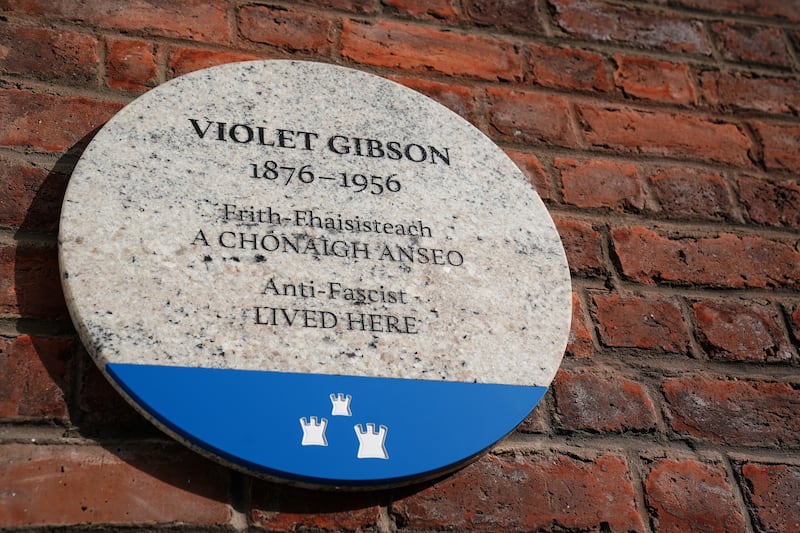Irishwoman Violet Gibson came within millimetres of changing the course of Italian history and perhaps that of the world.
On April 7th, 1926 she fired a shot at the Italian fascist dictator Benito Mussolini as he left a conference in Rome. One shot grazed Mussolini’s nose causing it to bleed profusely. She attempted to fire again but the gun jammed. It was a veritable suicide mission and Gibson was quickly overwhelmed by an angry mob. She did not die. Instead, her fate was worse in many ways than death. She was incarcerated in a psychiatric hospital in England for the last 30 years of her life.
On Thursday, a Dublin City Council plaque was unveiled outside the Gibson family home at 12 Merrion Square. It makes no reference to her most famous deed. Instead, it simply states in Irish and English that Violet Gibson (1876-1956) was an “anti-Fascist”.
Had she succeeded, would Italian fascism have withered without its totemic leader? Would the death of Mussolini have had any impact on the rise of German fascism?
READ MORE
In 1926 Mussolini was not the international pariah he would become. His opposition to socialism and communism was widely lauded not least in Ireland where the president of the executive council (effectively the taoiseach) WT Cosgrave wrote to him: “I have the honour to congratulate your Excellency and the Italian people on the providential escape of Your Excellency from the odious attempt on your person. I send you my most earnest wishes for a speedy recovery. The infamous attempts have caused much indignation here.”
Gibson knew better. She first visited Italy with her wealthy father Edward Gibson, Lord Ashbourne, the Lord Chancellor of Ireland, when she was 10. She was outraged by the murder in 1924 of Giacomo Matteotti, the leader of the opposition United Socialist Party and an outspoken critic of Mussolini. His book, The Fascisti Exposed: A Year of Fascist Domination, which dealt with the crimes of fascist supporters in Italy informed her decision to try to kill Mussolini.

In the immediate aftermath of the assassination attempt, her estranged father sent a telegram to Mussolini: “Miss Gibson’s family regret incident and express profound sympathy — Lord Ashbourne, Dublin.”
Ninety-six years later Violet Gibson’s great-niece Philippa Gibson described her as a “brave and dedicated woman and her awareness of the dangers of fascism is an example to us all”.
After she was arrested, the British and Italian governments agreed a deal whereby she would be sent back to Britain, where she had lived, to spend the rest of her life in a psychiatric hospital. She died in St Andrew’s Nursing Home in Northampton in 1956 in her 80th year.
Siobhán Lynam, who has made radio and television documentaries about Gibson which were broadcast in 2014 and 2020 respectively, said Gibson was effectively “buried alive” for the rest of her life with her incarceration in a hospital. She said Gibson was vindicated by the events of the second World War when Mussolini was assassinated by Italian partisans having brought his country to ruin on the side of the Nazis.
Yet she was never released from hospital. Independent Councillor Mannix Flynn, who had proposed the plaque to the council, said Gibson was effectively a political prisoner for the rest of her life after shooting Mussolini.

“We owe Violet Gibson a great gratitude. Violet Gibson should be placed at the centre of European history. Any attempt to airbrush her out will be challenged,” he said.
“I hope the historians in Italy will put Violet Gibson where she rightly belongs. The Catholic Church should honour her as a Christian martyr.”











